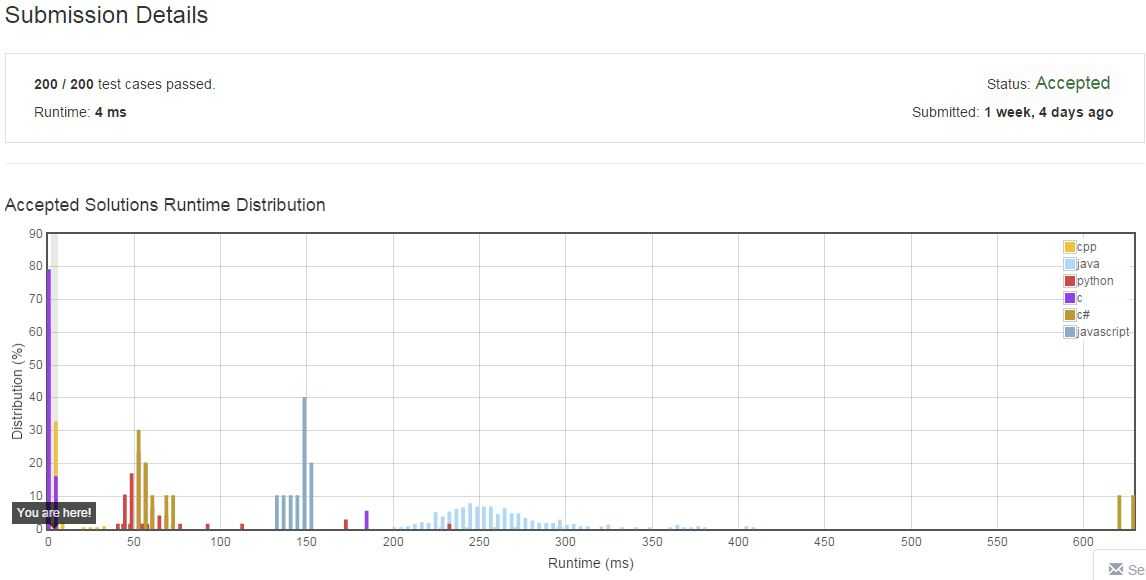标签:
Question:
The set [1,2,3,…,n] contains a total of n! unique permutations.
By listing and labeling all of the permutations in order,
We get the following sequence (ie, for n = 3):
"123""132""213""231""312""321"
Given n and k, return the kth permutation sequence.
Note: Given n will be between 1 and 9 inclusive.
Solution:
1 string itoax(int num) 2 { 3 stringstream result; 4 5 result<<num; 6 return result.str(); 7 } 8 int fac(int n) 9 { 10 if(1==n || 0==n) 11 return 1; 12 else 13 return n*fac(n-1); 14 } 15 string get_each_char(vector<int> &a,int &k) 16 { 17 int n=a.size(); 18 if(1==n) 19 { 20 string b=itoax(a[0]); 21 a.erase(a.begin(),a.end()); 22 return b; 23 } 24 int nn=fac(n-1); 25 int i=ceil(double(k)/nn); 26 string b=itoax(a[i-1]); 27 k=k-nn*(ceil(double(k)/nn)-1); 28 a.erase(a.begin()+i-1,a.begin()+i); 29 return b; 30 } 31 class Solution { 32 public: 33 string getPermutation(int n, int k) { 34 string result; 35 vector<int> a; 36 for(int i=1;i<=n;i++) 37 a.push_back(i); 38 while(!a.empty()) 39 { 40 string c=get_each_char(a,k); 41 result +=c; 42 } 43 return result; 44 45 } 46 };

标签:
原文地址:http://www.cnblogs.com/riden/p/4631539.html